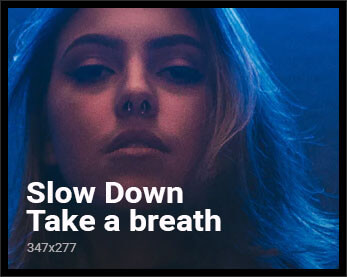What is VAPA in Education Lesson Strategy?
What’s VAPA in a lesson plan for education? For teachers, you’ve likely heard the word VAPA, but what exactly does it mean? How can you develop lessons that revolve around it? We’ll break this down in a way that’s easy to comprehend, and then I’ll provide you with practical suggestions that you can implement in your classroom today.
Outline:
- Introduction: Understanding VAPA
- Why is VAPA important?
- Key Components of VAPA
- Visual Arts
- Performing Arts
- Creating a VAPA Lesson Plan
- Step-by-step guide
- Examples of activities
- Benefits of VAPA in Education
- FAQs
What is VAPA in education?
VAPA is a shorthand, as VAPA stands for Visual as well as Performing Arts. It’s an approach to education that focuses on different art methods like drawing, painting, dancing, music, theater, and much more. When we discuss the creation of an educational lesson for VAPA, we’re considering ways to incorporate these artistic aspects into your teaching.
We as educators tend to pay attention to math, reading, as well as science. What do we think of the arts? Integrating VAPA into your curriculum will help children express themselves creatively as well as improve their critical thinking skills and increase confidence.
Why is VAPA important?

Let’s be real for a moment. You might be thinking, “Aren’t arts just fun and games?” But they’re not. VAPA is essential for an overall education.
Here’s why:
- It increases creativity Children can discover new ideas and think outside the box.
- It enhances emotional intelligence By combining the arts and sciences, children learn to demonstrate their emotions and procure empathy.
- It improves engagement A rich curriculum with VAPA will make learning more enjoyable and keep students interested and engaged.
Key Components of VAPA
If you’re planning a VAPA lesson program, you’ll need to focus on the four main art forms, which include: visual arts, music, and dance, as well as theater. Let’s take a deeper look at each one of them.
Visual Arts
Imagine anything that involves making visual works—painting, drawing sculpture, painting, or digital art. Examples:
- Projects for painting Encourage students to design the landscapes of their dreams together with watercolors.
- Sculpture Make use of clay or playdough for modeling animals or even objects.
Performing Arts
This can include dance, music, and drama. Involving children in performing activities will boost their confidence and their communication abilities.
Here are some suggestions:
- drama exercises Students should perform an action from the story of a book or a novel they’ve taken a look at.
- Dancing routines teach a basic dance that can be linked to a cultural or historical lesson.
Creating a VAPA Lesson Plan
How do you create an effective VAPA in the education field? This step-by-step guide will begin.
Step 1: Set Learning Objectives
What do you hope the students of your school will complete? Examples:
- Know the fundamentals of color theory.
- Make a scene with the body language and facial expressions.
Step 2: Choose Your Art Form
Choose whether the lesson will be focused on visual arts or dance, music, or drama. You can also mix several of these if it is appropriate to the subject.
Step 3: Plan Activities
Make the lessons simple and engaging. Here are a few suggestions:
- Arts and visual Color and draw an image from the story.
- Music Learn to clap in rhythms that are related to a particular subject, for example, fractions.
Step 4: Link to Other Subjects
You don’t need to teach art as a separate subject. A VAPA lesson can be easily tied to topics like literature, history, and science. For example:
- Learn about ancient Egyptian art and the history of Egypt.
- Make use of music to investigate patterns and math.
Step 5: Assess and Reflect
When you have finished the lesson, have students take a moment to reflect on the work they’ve created. It could be a short group discussion or a brief written review.
Benefits of VAPA in Education

Making use of VAPA as part of your lessons isn’t only about having fun. It can favor real benefits to your education. Here’s how:
- Enhances cognitive knowledge The arts improve problem-solving capabilities along with critical thinking.
- encourages collaboration Group art projects or drama productions encourage the importance of teamwork.
- Promotes awareness of culture Dance, music and theatre expose children to various cultures and traditional beliefs.
FAQs
What does VAPA mean in the field of education?
VAPA is a short form of Visual and Performing Arts. It covers art forms like painting and drawing as well as dance, music, and theater.
What are the reasons why VAPA is vital in the field of education?
VAPA is vital for developing the ability to think creatively, emotional intelligence, and critical thinking talent in children. It helps make learning more enjoyable and enjoyable.
How can I design a VAPA course plan?
Begin by establishing learning goals, deciding on an art form, and arranging engaging activities. Make sure to connect the arts to other subjects, such as literature or history.
Do I have the ability to use VAPA in any field?
Yes! VAPA can be incorporated in a range of subjects such as math, science, and even literacy. For instance, together drama to act in a historical scene or creating art to illustrate the outcome of a scientific experiment.
What is VAPA in an education lesson plan? It’s about bringing the arts to the forefront of your teaching, making learning a fun and creative process for both you and your students. By including visual and performing arts in your lesson plans, you’re setting up your students for success both inside and outside the classroom.




